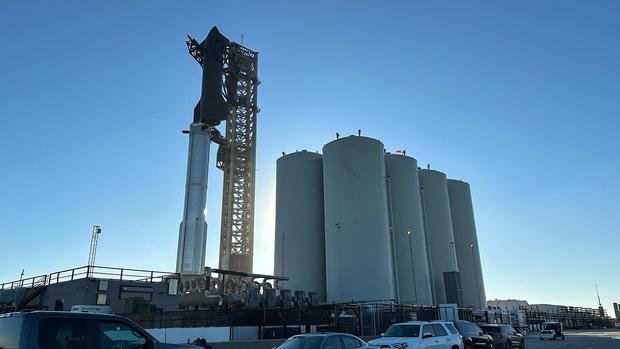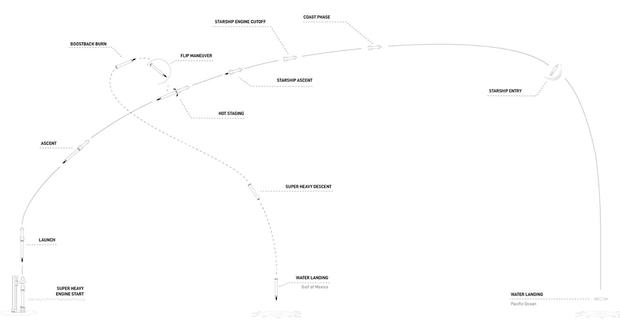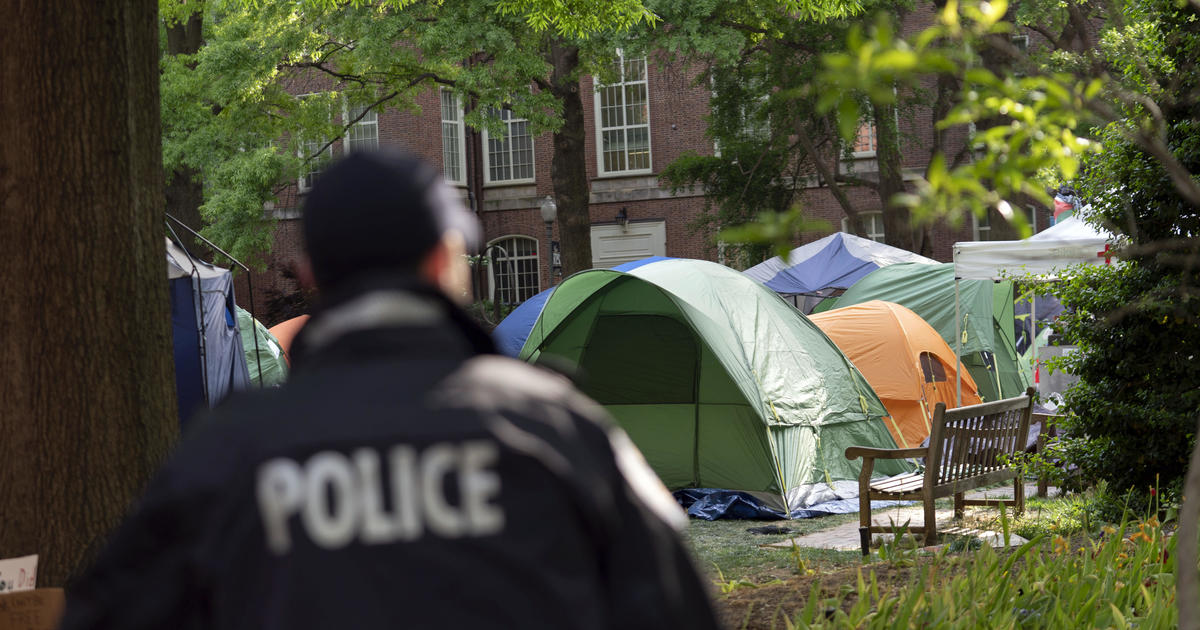With launch license in hand, SpaceX plans second test flight of Starship rocket Saturday
SpaceX's huge Super Heavy-Starship rocket will now take its second test flight Saturday, when the company will attempt to boost the unpiloted Starship upper stage into space for the first time, the company announced. The launch had been cleared for Friday but Chief Executive Elon Musk said a piece of flight control hardware needed replacing.
"We need to replace a grid fin actuator, so launch is postponed to Saturday," Musk wrote on social media platform X on Thursday.
After weeks of anticipation, the Federal Aviation Administration on Wednesday granted SpaceX the required launch license, clearing the way for liftoff nearly seven months after the rocket suffered multiple failures and blew itself up during its maiden flight in April.
Since then, SpaceX has implemented what company founder Elon Musk said were "well over" 1,000 upgrades and improvements and carried out 63 FAA-mandated "corrections" designed to improve flight safety and performance.
"The (launch) license applies to all phases of the proposed operation," the FAA said in a statement. "After consultation with the U.S. Fish and Wildlife Service and a written evaluation of the 2022 Programmatic Environmental Assessment, the FAA concluded there are no significant environmental changes."
The Super Heavy's liftoff from SpaceX's Boca Chica flight test facility on the Texas Gulf Coast had been targeted for 8 a.m. EST Friday before Musk announced the postponement.
The goal of the flight is to send the Starship on a looping trajectory around the planet before re-entry and splashdown in the Pacific Ocean north of Hawaii.
The 30-foot-wide Super Heavy-Starship is the largest, most powerful rocket ever built, standing 397 feet tall and tipping the scales at more than 11 million pounds when fully fueled.
The 33 Raptor engines in the Super Heavy first stage are capable of generating 16 million pounds of thrust at full throttle — roughly twice the power of NASA's Space Launch System moon rocket, currently the world's most powerful.
A successful flight test would mark a major milestone for both SpaceX and for NASA, which is spending billions for a variant of the Starship upper stage to carry Artemis astronauts from lunar orbit down to the surface of the moon.
SpaceX is counting on the rocket to vastly expand its constellation of Starlink internet satellites and to power eventual low-cost government and commercial flights to the moon, Mars and beyond.
Multiple test flights will be needed to demonstrate the reliability required for astronaut flights and it's not yet clear how long that might take.
In its maiden flight, the Super Heavy-Starship launch pad was heavily damaged. Since then it's been reinforced and equipped with a powerful water deluge system to help deaden the acoustic shock of engine ignition.
A new "hot staging" technique was implemented to begin firing the Starship upper stage's six Raptor engines while still attached to the Super Heavy first stage. The traditional technique — engine ignition after separation — failed to work properly during the first flight.
The Super Heavy also was equipped with a more robust electronic steering system to move, or gimbal, engine nozzles as needed to maintain the proper trajectory. And the rocket's self-destruct system was upgraded to make sure it will act promptly if needed.
The new staging system will be put to the test about two minutes and 40 seconds after liftoff when the first stage engines begin shutting down after boosting the rocket out of the dense lower atmosphere.
The Starship's six Raptors will ignite while the upper stage is still attached to the booster, using a new vent system to deflect the exhaust away from the first stage. The Starship should separate from the Super Heavy moments later and continue the climb to space.
While designed to be fully reusable, the Super Heavy first stage will not be recovered. Instead, it will carry out rocket firings to slow down as if it was heading for a landing pad, but will fall tail first into the Gulf of Mexico instead.
The Starship's engines, meanwhile, will continue firing for another five minutes or so. Then it's expected to coast around the planet, falling back into the discernible atmosphere about one hour and 20 minutes after launch.
Like the first stage, the Starship is designed to be reusable, but no recovery is planned for this initial test flight. The trajectory will carry the Starship to a Pacific Ocean impact north of Hawaii.
As SpaceX sums up the countdown on the company's website: "Excitement guaranteed."






